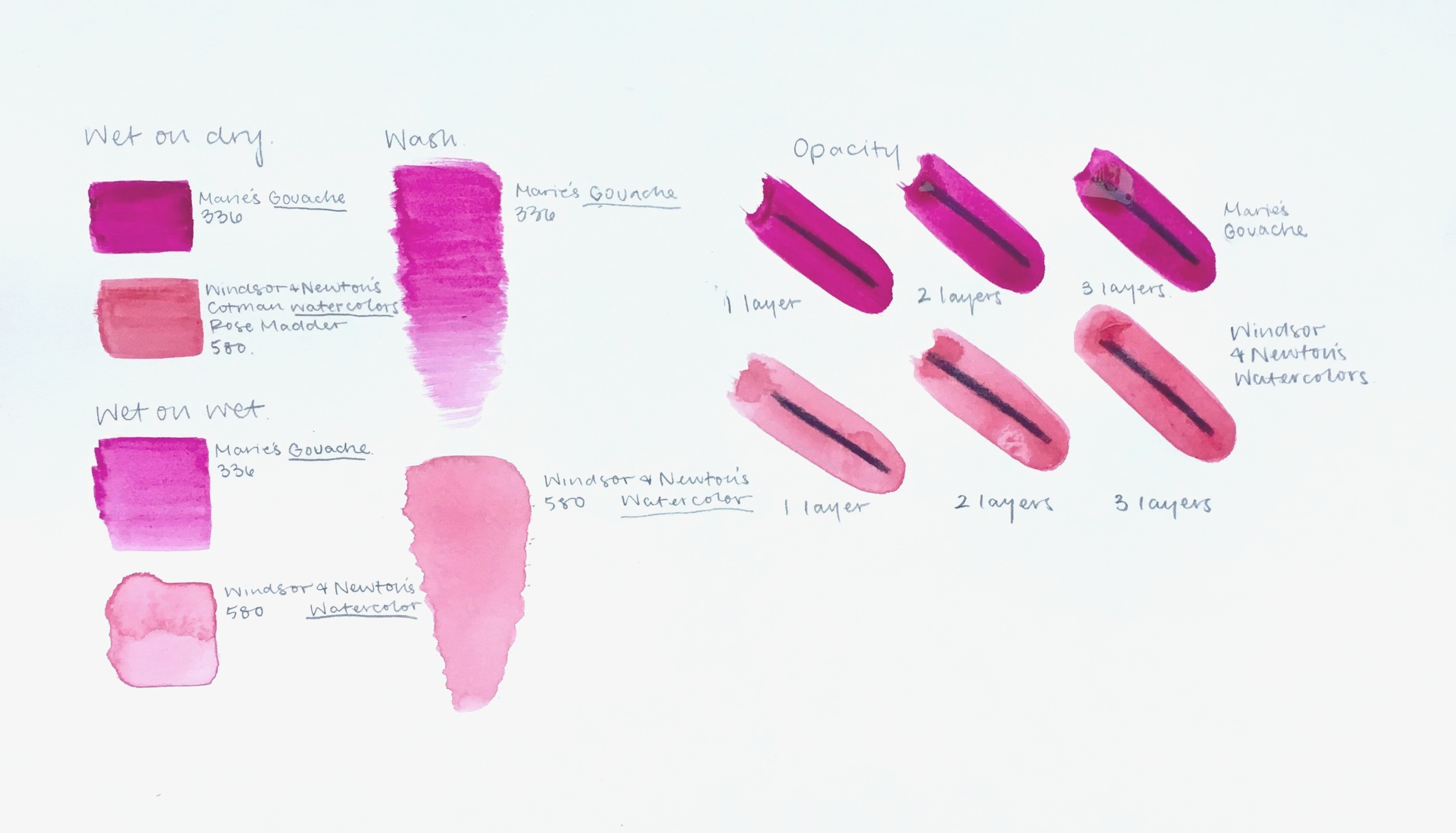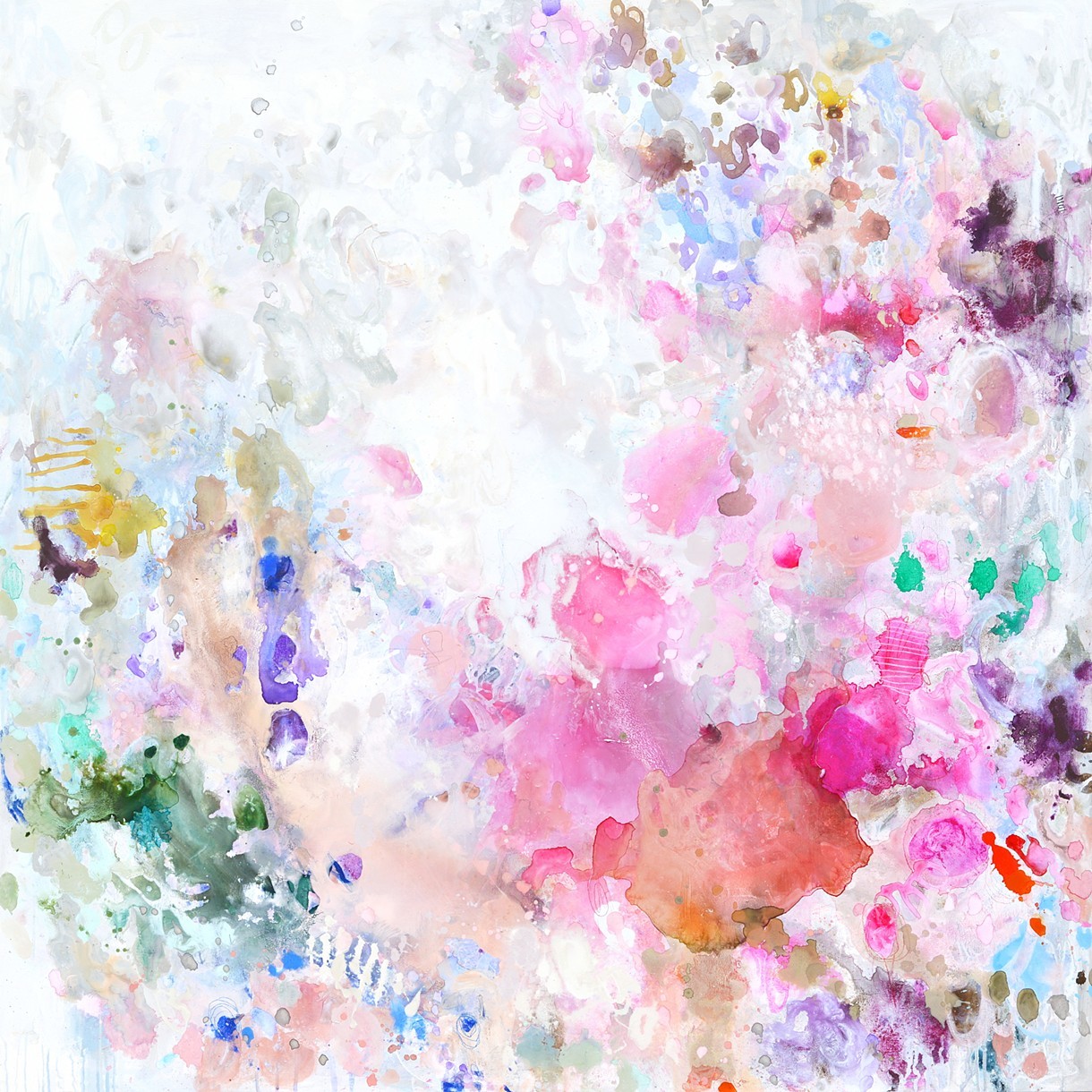Exploring and Understanding Gouache
Written by Bynn Shen, Spring 2019 Intern
When it comes to paint mediums, many people are aware of watercolor, tempera, acrylic and oil, but one medium that is often overlooked is gouache (pronounced “gwash”). Gouache is seemingly a mix between watercolor and tempera paint. It can be used like watercolors–thinning the pigment down with water and layering the colors–as well as thick and heavy like tempera paint straight from the tube. As an artist myself, I found working in watercolor difficult at first. I was unable to figure out a fitting paint to water ratio without the paint being too thick and too thin. That being said, there are many strong watercolor and gouache pieces which take advantage of the ability to layer colors. Watercolor dries with a satin finish while gouache dries matte, so if that aesthetic is desired, gouache is an excellent option.
Comparing gouache and watercolor through wet on dry and wet on wet techniques, washes, and testing the opacity of the two mediums by layering paint on top of a line of graphite.
History
Gouache has been used in paintings since ancient Egypt. Egyptians used binding agents of honey or tragacanth glue with the pigments. Following that, the medium appeared on illuminated manuscripts in the Middle Ages. Although gouache was prevalent throughout the history of art, few acknowledged it or recognized its value. In 18th century France, the term gouache was developed and applied to the opaque water-based medium. Gouache was used by artists in combining different mediums to create a more unique surface in pastel paintings, as well as being used as a base layer in oil paintings. By this time, gouache began to include modern-day ingredients of gum arabic as the binding agent with an opaque white pigment, such as chalk. During the 20th century, the medium was manufactured in tubes, allowing artists to easily access it and use it outside of the studio.
How Artists Use Gouache
Landscape and nature painter Albrecht Dürer utilized both watercolor and gouache in his paintings. Because these two mediums are similar, they can work together to improve one another. In Wing of a Blue Roller, c. 1500 or 1512, Durer rendered a hyper-realistic view of a bird’s wing by using the buildable properties of gouache and watercolor. In instances like this, an artist might first put down a watercolor base to draw and plan out the values, then build the composition up with layers of gouache, creating structure, color, and details. Watercolor and gouache work very well together and can be layered to create depth and realistic effects.
Gouache vs Watercolor
Gouache and watercolor share many similarities, but one of the key differences is that gouache is much more opaque and mud-like than watercolor. In fact, the word “gouache” is derived from the Italian term guazzo meaning “mud.” For the most part, watercolor and gouache behave in the same way, but with watercolor, there is no real way to apply thick paint without it still appearing transparent. Because watercolor is watered down pigment, it has a tendency to bleed into other colors blurring the edges whereas gouache allows for clean and crisp edges. Even if the gouache was watered down, the paint would still remain opaque. Watercolor dries relatively matte but if more paint was layered on, it develops a satin sheen, while gouache dries matte no matter what.
Casey Matthews
Gouache in Contemporary Art
Today, it is not as common to see paintings only using gouache as most artists use it along with other mediums. Casey Matthews is a Florida-based painter who marries many different types of mediums and household objects to create pieces. His work includes many subtleties in color and line variation.
Spanish painter Annabel Andrews uses acrylic and gouache by laying down thick layers of paint which builds texture. Her work is very geometric with solid filled shapes sometimes accompanied by lines or other elements to help tie the piece together. The shapes are painted in a quick manner, not overly concerned about uneven edges or misalignment with other shapes.
Framing works with gouache
Because gouache is almost always done on paper, it is important to limit the amount of sun exposure to the piece. With too much sun exposure, the colors may start to fade and become less saturated than when initially put down. A good way to ensure your gouache painting is fully protected is to frame with UV filtering plexiglass and avoid direct sunlight. To learn more about plexiglass for archival use, read our blog post here.
Rebecca Shore
. . .



